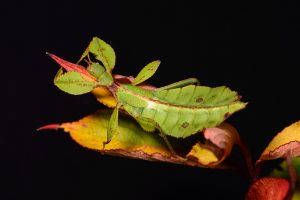
© Shutterstock
A Lesson in Flawless Coordination from Nature’s Classroom
Musa Sattar, London, UK
In the heart of nature’s orchestra, a tiny creature often goes unnoticed, yet its harmonious symphony of cooperation is an awe-inspiring masterpiece. As diligent architects of the insect world, ants have perfected the art of teamwork with such precision that it humbles us in the face of their flawless orchestration.
These minuscule marvels thrive in diverse ecosystems across the globe. From African savannahs to South America’s lush rainforests, ants have adapted to nearly every environment, each species showcasing its own set of unique characteristics. Yet, the common thread among them is the unwavering dedication to their hierarchical societies, remarkable communication, and coordinated efforts that highlight both the flawlessness and the intricacy of nature.
At first glance, a bustling anthill might appear chaotic, but delve deeper and you’ll find a regulated choreography guided by pheromones (tiny chemical trails left behind as ants wander, forming a roadmap for the colony to follow) and a shared sense of purpose.
At the heart of the ant kingdom lies a hierarchical social structure, where every ant plays a specific role within the colony. Born into different castes, ants can be workers, soldiers, or other specialised roles, each contributing to the collective wellbeing of the community. Each ant knows its role with unwavering clarity, from foragers who venture far and wide in search of sustenance, to soldiers who defend the colony, to the skilled architects who meticulously construct the labyrinthine tunnels. This division of labour is the foundation of their efficient and harmonious cooperation.
The colony of ants, a bustling hub of activity, serves as the major social unit for ants. Their intricate nests, with their varied structures and materials, house the colony and protect the young. Each nest is a testament to the unique adaptability of ants, demonstrating how they utilise available resources to create a secure and thriving environment.
Though diverse in their social behaviour and habits, most ants share a common physical structure, spanning a size range of 0.08 to 1 inch (2 to 25 millimetres) and showcasing colours ranging from yellow to brown, red or black, with a few species exhibiting a captivating metallic lustre.
But perhaps one of the most fascinating facets of ants is their collective intelligence. A single ant might seem inconsequential because of its miniscule brain, but as part of the colony, it becomes a single neuron in a much larger, decentralised brain. This networked intelligence allows ants to solve complex problems, making decisions as a unified entity.
Consider the leafcutter ants of Central and South America, known as the farmers of the insect world. They work in perfect harmony, meticulously slicing through leaves and transporting them back to their underground fungus gardens. This leafy harvest serves as the nourishment for the fungi that, in turn, feeds the ants.
But it’s not just their cooperative endeavours that may dazzle us; it’s their adaptability, too. Ants have an uncanny ability to adjust to changing circumstances. When resources are scarce, some species engage in a fascinating practice called ‘rafting’. They form a living raft by linking their bodies, creating a buoyant structure that can float on water for weeks, enabling them to survive floods and navigate treacherous waters as one unified entity.
Another most intriguing aspects of ants is their ability to pass knowledge between generations, forming what some experts consider a colony ‘memory’. This shared wisdom allows the colony to adapt to changing circumstances and optimise its survival strategies over time. For example, the Sahara Desert ant wanders around the barren desert searching for food, but it can remember how far it has walked, or how many steps it has taken since it last left the nest.
Ants have conquered both the land and the trees, and some even wield impressive weaponry. Take the bullet ant, found in the rainforests of Central and South America. It possesses one of the most painful stings in the insect kingdom. While its sting may seem brutal, it’s a testament to the multifaceted role ants play in maintaining ecological balance. They are both prey and predators, an integral part of the intricate web of life.
As we delve into the world of ants, we’re reminded of the beauty of flawless cooperation in nature. These tiny architects have mastered the art of selflessness, working tirelessly for the greater good of their community. Their behaviour echoes the intricate workings of a well-oiled machine, and their resilience in the face of adversity speaks to the tenacity of life on this planet.
With over 12,000 known species and possibly many more yet to be discovered, ants are virtually ubiquitous on our planet, with the exception of a few locations. Their legendary communication skills and superorganism-like behaviour contribute to the existence of a staggering 20 quadrillion ants on Earth—about 2.5 million ants for every human.
In the grand symphony of life, ants hold a unique place, showcasing the beauty of unity, communication, and memory within the realm of the minuscule. Studying these remarkable creatures reminds us of the exquisite harmony and flawless design present in the intricate web of nature, a reminder of the stunning wonder that exists right beneath our feet.
Now pause for a moment and reflect: who made these tiny ants capable of such brilliant engineering? What causes ants to move in a perfect sequence, regardless of obstacles? How do the ants know the calculations to build a perfect tower, and the numbers of ants that are needed to position in a distinctive shape for rafting?
‘All of these tasks are performed by thousands of purblind creatures with brains containing one-ten-thousandth of the number of neurons found in humans.’ Professor Craig Tovey, an engineer and biologist at Georgia Institute of Technology, describes his fascination with the ant colony’s ability to perform a variety of tasks such as foraging for food, floating in water, fighting other ants, and building towers and underground nests.
Does the humble ant’s harmonious collaboration, adaptability, and unwavering resilience make us ponder the concept of a flawless Creator’s design, wherein each minuscule creature occupies its rightful place, contributing to the magnificent tapestry of life?
Further Reading:
https://www.smithsonianmag.com/science-nature/ant-colonies-retain-memories-outlast-lifespans-individuals-180971022/
https://www.scientificamerican.com/article/decoding-the-remarkable-algorithms-of-ants/
https://www.scientificamerican.com/article/how-fire-ants-form-giant-rafts-to-survive-floods/
Jen Green, Exploring Nature: Incredible Insects: An Amazing Insight into the Lives of Ants, Termites, Bees and Wasps, Shown in More Than 220 Close-up Images (Armadillo Books: 2014).
Angels Julivert, The Fascinating World of Ants, (Barrons Juveniles: 1991)




Add Comment